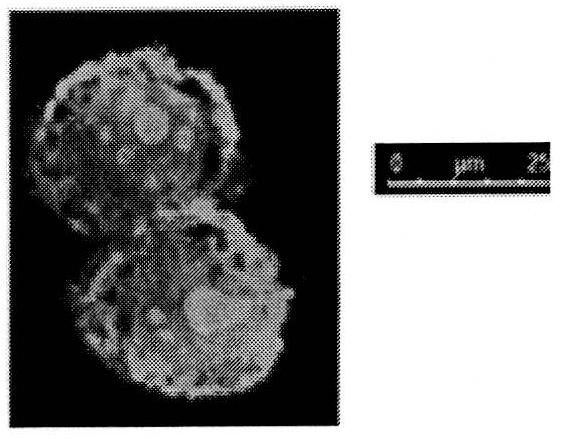A Novel Penetrating Peptide Mediating Drug Delivery and Its Application
A technology of drugs and anti-tumor drugs, which is applied in the field of membrane-penetrating peptides and the application of the membrane-penetrating peptides in drug delivery and tumor treatment. It can solve the problems of low introduction efficiency, difficulty in promotion, death, etc. best therapeutic effect
- Summary
- Abstract
- Description
- Claims
- Application Information
AI Technical Summary
Problems solved by technology
Method used
Image
Examples
Embodiment 1
[0042] Example 1: Synthesis of Penetrating Peptides
[0043] 1) Activation of resin: Weigh 1000mg of wang resin, add 10-15ml (submerge the whole resin) in DMF and soak for 30min to make it fully swell;
[0044] 2) Deprotection: Soak the DMF of the resin to remove it by pressure filtration, add 10ml of DMF solution containing 20% piperidine, react with nitrogen blowing and boiling for 15min, then remove it by pressure filtration, remove the FMOC group of the amino group, and wash the resin with 10ml of isopropanol Three times, then wash three times with 10ml DMF, and then use the ninhydrin method to detect that the resin should turn black or purple;
[0045] 3) Condensation reaction: connect the next amino acid, weigh the amount of Fmoc-amino acid to be 1.4mmol / g resin, 910mg TBTU, add 10ml DMF and 0.45g HOBt and mix evenly, add 0.52ml DIEA to make the reaction solution, nitrogen at room temperature Boiling reaction 2h. After the reaction was complete, the resin was washed ...
Embodiment 2
[0050] Embodiment 2: Cytotoxicity experiment
[0051] 1) Take a 96-well plate and add 7×10 3 1 cell, 37 ° C, 5% carbon dioxide incubator for 24 hours, so that the cells adhere to the wall;
[0052] 2) Prepare culture medium containing different concentrations of the penetrating peptide of SEQ ID No.3, and use the medium without the penetrating peptide as the negative control well (Control), and incubate at 37° C. with 5% carbon dioxide for 1-5 hours;
[0053] 3) Add 20 μl MTT to each well of adherent cells, continue to incubate for 24 hours, discard the culture medium, add 150 μl DMSO (dimethyl sulfoxide) to each well, and shake for 10 minutes;
[0054] 4) Select a wavelength of 490nm or 570nm, and calculate the cell survival rate by the light absorption value on the microplate reader immunodetector. The results are shown in Table 1. The results show that the multiple penetrating peptides of the invention have no obvious cytotoxicity. Select the result of SEQ ID No: 3 as s...
Embodiment 3
[0057] Example 3: Membrane-penetrating peptide and fluorescence detection experiment
[0058] 1) Add the culture medium containing 100 μM concentration of FITC fluorescence-labeled SEQ ID No.2 membrane-penetrating peptide to the adherent cervical cancer (Hela) cells, incubate for 30min-4h, carefully suck off the medium, and wash the adherent cells three times with PBS ;
[0059] 2) Add fixative, 10min-20min, fix the cells and wash the cells 2-3 times with PBS;
[0060] 3) Add DAPI staining solution to stain for 5min-10min, then wash with PBS 2-3 times;
[0061] 4) Observe with a fluorescence microscope under the excitation light of 488nm and 543nm respectively, the results are shown in figure 2 . The results showed that the membrane-penetrating peptide successfully penetrated the membrane and delivered the fluorescent marker into the cell.
PUM
 Login to View More
Login to View More Abstract
Description
Claims
Application Information
 Login to View More
Login to View More - R&D
- Intellectual Property
- Life Sciences
- Materials
- Tech Scout
- Unparalleled Data Quality
- Higher Quality Content
- 60% Fewer Hallucinations
Browse by: Latest US Patents, China's latest patents, Technical Efficacy Thesaurus, Application Domain, Technology Topic, Popular Technical Reports.
© 2025 PatSnap. All rights reserved.Legal|Privacy policy|Modern Slavery Act Transparency Statement|Sitemap|About US| Contact US: help@patsnap.com



